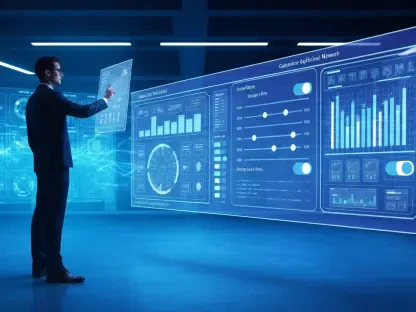I’m thrilled to sit down with Chloe Maraina, a Business Intelligence expert whose passion for crafting compelling visual stories through big data analysis has reshaped how we think about data management and integration. With her deep expertise in data science, Chloe brings a unique perspective to the evolving landscape of digital workplace solutions and digital employee experience (DEX). In this interview, we dive into the critical role of DEX in driving business success, the journey toward digital workplace maturity, the challenges IT teams face, and the transformative power of automation balanced with the human touch. We also explore how data-driven tools can uncover hidden friction points to enhance employee satisfaction and productivity.
How would you define a great digital employee experience, and why do you believe it’s so vital for a company’s growth and success?
I think a great digital employee experience, or DEX, is all about creating a seamless, intuitive, and secure environment where employees can access the tools and data they need without frustration, no matter where they’re working from. It’s vital because when employees have a smooth digital experience, their productivity soars—they’re not bogged down by tech issues or clunky systems. On the flip side, a poor DEX can sap morale, slow down workflows, and even push talent out the door, which directly hurts a company’s ability to stay competitive in today’s fast-paced market.
Can you break down the concept of ‘digital workplace maturity’ in a way that’s easy to grasp, and explain what it looks like when a company gets it right?
Absolutely. Digital workplace maturity is essentially how well a company can manage and enhance the digital tools and experiences for its workforce, not just reacting to problems but anticipating and preventing them. When a company gets it right, you see proactive strategies—issues are fixed before employees even notice. It looks like a workplace where tech feels effortless, downtime is rare, and employees can focus on their core tasks instead of fighting with systems.
What do you see as the biggest hurdles IT teams face when trying to build a world-class digital employee experience?
One of the biggest hurdles is a lack of deep understanding of the tools they’re deploying and how employees actually use them. Too often, IT focuses on rolling out software or security systems without fully grasping the day-to-day impact on users. This can lead to misconfigurations or gaps in support, which frustrate employees and expose vulnerabilities. It’s a disconnect between deployment and real-world application that can undermine even the best intentions.
How can IT teams shift their mindset from simply reacting to issues to proactively enhancing the digital experience for employees?
The shift starts with adopting a forward-thinking approach—using data and insights to predict problems before they happen. This means investing in monitoring tools that flag potential issues, like slow systems or security risks, and addressing them preemptively. It changes the game for IT teams, moving them from constant firefighting to a more strategic role where they’re optimizing experiences rather than just fixing breakdowns.
Why do you think automation plays such a pivotal role in creating a better digital workplace, and how does it benefit both employees and IT staff?
Automation is a game-changer because it handles repetitive, time-consuming tasks—like fixing configuration errors or managing security updates—before they become problems. For employees, this means fewer interruptions and more time for meaningful work. For IT staff, it cuts down on help desk tickets and frees them up to focus on bigger-picture improvements. Plus, automation scales beautifully, ensuring growing companies can manage more users and devices without drowning in manual updates.
Even with all the benefits of automation, why do you believe the human element remains essential in managing a digital workplace?
Automation is powerful, but it can’t replace the human touch. People want to feel heard, not just processed by a system. Managers need to stay engaged, reviewing automated processes and stepping in when needed to ensure things align with the company’s goals. Understanding employee feedback and frustrations, even in an automated setup, helps build trust and ensures the tech serves the people, not the other way around.
How can data-driven tools like real-time visibility and sentiment analysis help uncover and address pain points in the digital employee experience?
These tools are incredible for shining a light on hidden issues. Real-time visibility lets you see where systems are lagging or failing, while sentiment analysis captures how employees actually feel about their digital tools—whether they’re frustrated or satisfied. By spotting these friction points early, companies can tweak systems or processes before small annoyances turn into major roadblocks, ultimately keeping employees happier and more productive.
Looking ahead, what’s your forecast for the future of digital employee experience and the role of data in shaping it?
I see DEX becoming even more central to business strategy as remote and hybrid work continue to dominate. Data will be the backbone of this evolution—driving smarter automation, deeper insights into employee needs, and more personalized digital environments. Companies that harness data to proactively optimize DEX will stand out, while those that lag behind will struggle to retain talent and stay agile. It’s an exciting time, and I think we’re just scratching the surface of what’s possible.









